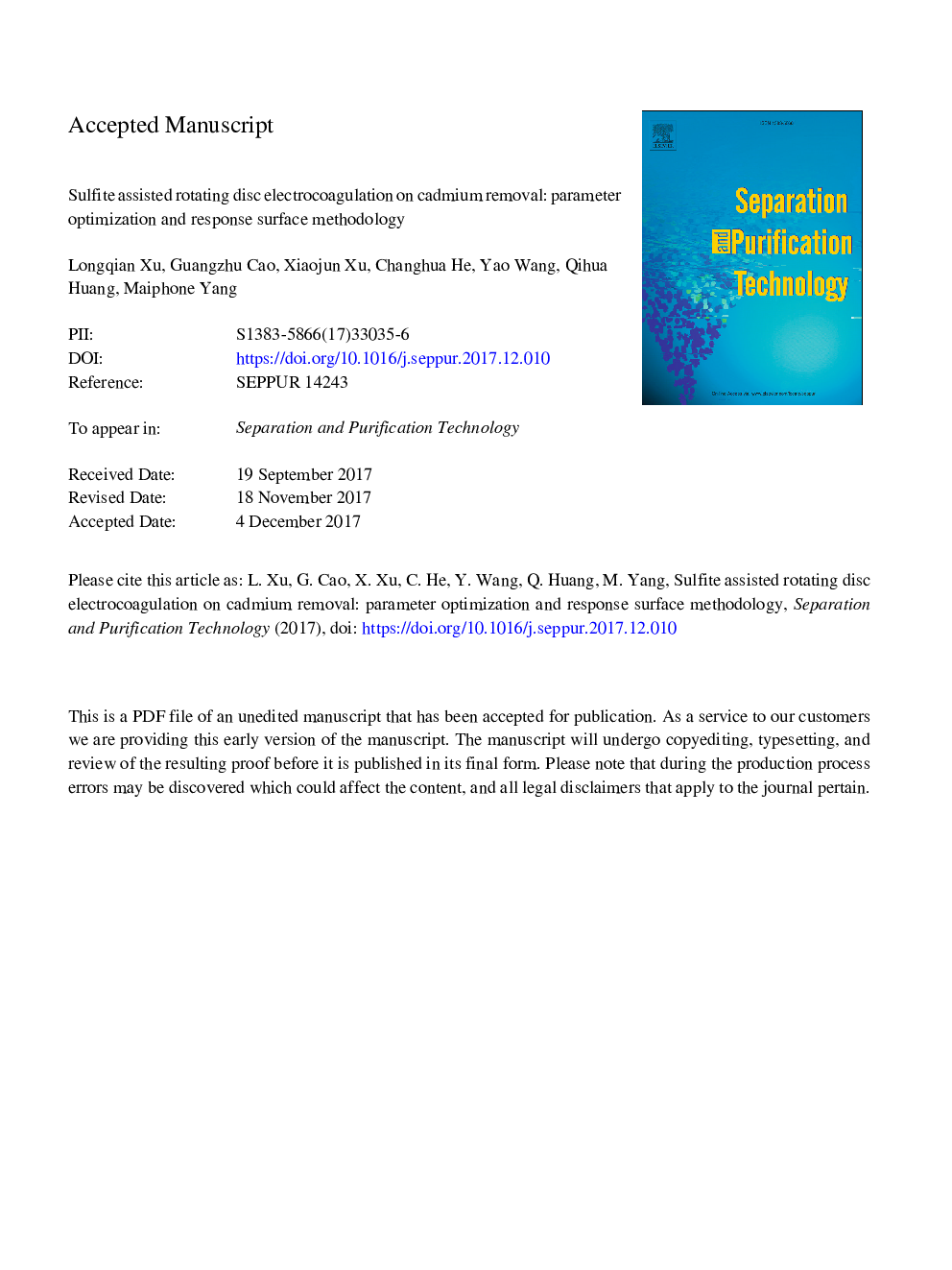| Article ID | Journal | Published Year | Pages | File Type |
|---|---|---|---|---|
| 7044008 | Separation and Purification Technology | 2018 | 17 Pages |
Abstract
Redox conditions is an extraordinary parameter as it controlled the generation of functional products in iron-electrocoagulation process. In the present study, a newly designed rotating disc electrocoagulation system (RDEC) on cadmium removal from wastewater assisted by sodium sulfite is investigated. The oxidation and reduction environment are adjusted and controlled with rotate speed and sodium sulfite, respectively. In the first stage, single effect factors such as initial pH (pHi), current density (j), electrode distance (d), rotate speed (n), Na2SO3 dosage (CS), and initial Cd2+ concentration (C0) in RDEC process are evaluated using iron disc as sacrificial electrodes. Results indicate that initial pH, current density, and Na2SO3 dosage have a positive influence on Cd2+ removal, whereas rotate speed and electrode distance exhibit an opposite affect. The increase of Cd2+ removal efficiency at low rotate speed or high Na2SO3 dosage might be attributed to the generation of Fe(II)-Fe(III) layered double hydroxides (LDHs), which is identified to be an vital intermediatein on the removal of cadmium because of an oxygen-free solution environment is maintained. Finally, Response Surface Methodology (RSM) is carried out to investigate the interactional influences between current density, rotate speed, and Na2SO3 dosage and the optimal parameters based on the result of single factor experiments. The actual removal efficiency of Cd2+ and energy consumption (EEC) are respectively calculated as 98.11% and 2.98â¯kWâ¯h/m3 at the optimum operating conditions: C0 25â¯mg/L, pHi 7, j 10.85â¯mA/cm2, CCl 1000â¯mg/L, CS 114.5â¯mg/L, d 20â¯mm, and n 44.16â¯rpm.
Related Topics
Physical Sciences and Engineering
Chemical Engineering
Filtration and Separation
Authors
Longqian Xu, Guangzhu Cao, Xiaojun Xu, Changhua He, Yao Wang, Qihua Huang, Maiphone Yang,
